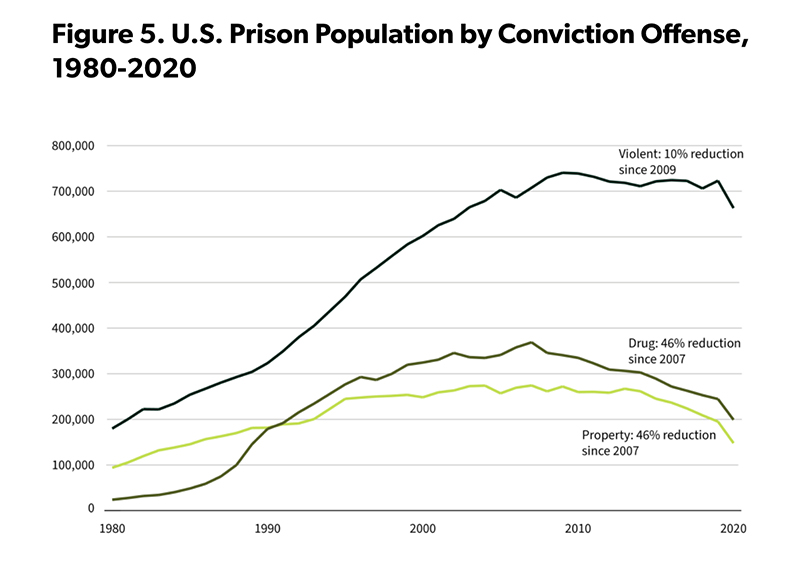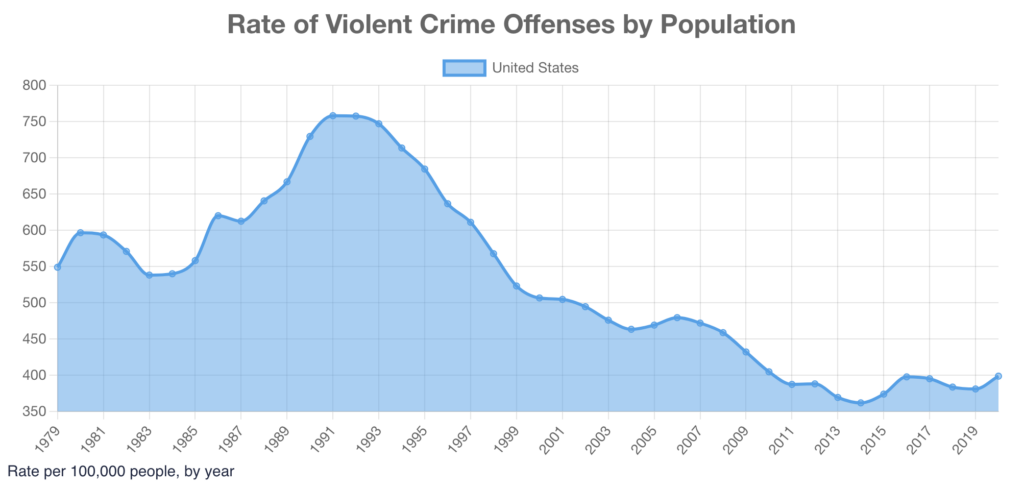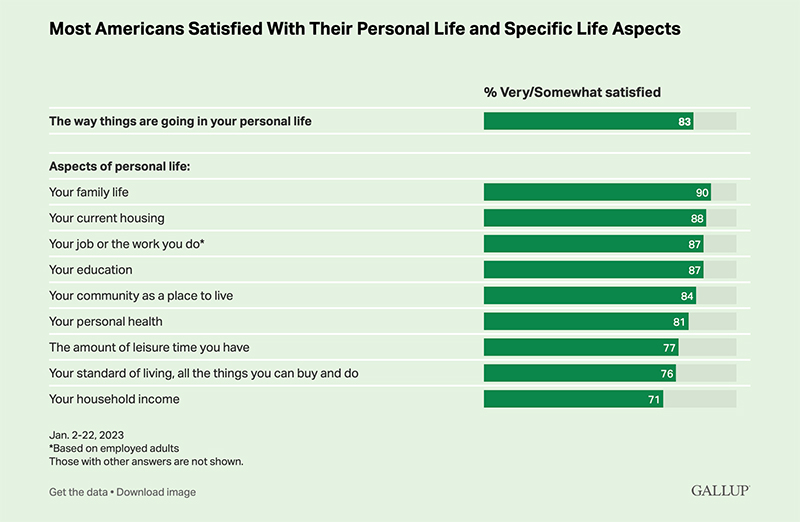Volcanoes are erupting in The Philippines, but on-fire Australia received some welcome rain. The Iran war cries have been called off and The Donald’s military powers are about to be hamstrung by the Senate. Meanwhile, his impeachment trial is starting, and we’re all on Twitter for a front-row seat.
What Could Go Right? Mass decarceration?
Not exactly. But some states have lowered prison populations and kept crime rates low, too.
This is our weekly newsletter, What Could Go Right? Sign up here to receive it in your inbox every Thursday at 6am ET. You can read past issues here.
Mass decarceration?
In October last year I wrote that the United States has started to incarcerate people at a lower rate, going from having the highest prison population rate in the world in 2015 to sixth place in 2021. “Obviously,” I wrote, “those still aren’t good numbers.” Until now I hadn’t seen further data on exactly how good or not good those numbers are.
In early February research and advocacy group The Sentencing Project released a policy brief that drills into the decarceration rate nationwide and in each state. Nationally, we are decarcerating 2.3 percent annually since 2009, when the US prison population was at its peak. At that pace, writes the brief’s author, Nazgol Ghandnoosh, we will return to 1972’s prison population in 2098. The group pins 1972 as the beginning of mass incarceration.
As we can see in the graph below, we are decarcerating more quickly when it comes to drug and property crimes than we are for violent offenders, which is sensible given that the late 1970s into the early 90s were a time of rising violent crime rates in the US. There is a natural delay in examining our response to that, which would necessarily include higher rates of incarceration for violent crimes.

The pertinent question then, in my view, is not when we would return prison populations to 1972 levels but whether we are finding the right balance, as a society, between overdoing and underdoing incarceration as it corresponds to crime rates, especially now as violent crime rates nationwide are much lower than they were even in the 70s.

As with most things in the US, the numbers vary greatly across states, and those varying scenarios are great case studies for attempting to answer the question above. As of 2021, all US states have reduced their prison populations since their peaks, although some are poised for those trends to reverse, says the Sentencing Project brief.
Some states, like Connecticut, New Jersey, and New York, reduced their prison populations by around 60 percent since their respective peaks, with no corresponding rise in violent and property crime, according to data from the FBI (their Crime Explorer does not track drug crime). I would call this progress. Others, like Arkansas, reduced their populations only slightly, but are dealing with violent crime rates that have been increasing since 2002 and are akin to late 90s nationwide levels. What I don’t see in the data given from The Sentencing Project—and it may not exist—is what kind of offenders have been released in each state, leaving the picture incomplete for an analysis of what path forward makes sense state by state.
One part of the brief, though, is a much more straightforward success story. The US youth justice system has already undergone a dramatic transformation, with the number of youth held in juvenile justice facilities at 25,000 in 2020, down from 109,000 in 2000. Youth crime rates are down, too.
Before we go
🌲 It’s not often you see the word “ahead of schedule” in articles about government plans. Ghana’s 2016 commitment to restore 2 million hectares of deforested and degraded land by 2030, however, is seven years ahead of schedule. They are already a third of the way toward their goal.
🤳 Options are slowly expanding for teenagers who want to stop an intimate photo of them circulating on the Internet. A new tool called Take It Down allows teens to report photos of themselves without having to send the photo itself to the company, which was previously required. So far, Facebook, Instagram, Yubo, OnlyFans, and Pornhub are participating.
🧸 It’s nice to see the Biden administration acknowledging that if you want people to work, you need to solve for caregiving. To be eligible for funding from the CHIPS and Science Act, companies “will be required to submit a plan explaining how facility [and] construction workers will access child care,” as per a presentation from the Commerce Department.
Below in the links section, EV-charging Subway restaurants, blood-glucose monitoring smartwatches, space-viewing balloon flights, and more.
Secretly Sexy
A pop-up section in which we celebrate numbers that represent substantial improvement in people’s lives
- 15.64: The millions of Ugandans in the middle class in 2020, up from 14.12 million in 2016
- 63: The percent of countries (more than 120 of them) that provide guaranteed paid parental leave for fathers. In the 1990s, only 46 countries had a paid leave policy for fathers.
- 21.3%: Last year’s employment rate for Americans with disabilities, a record high

We need a psychology of progress

Ultimately, progress is powered by people. So if we want to drive progress, we have to understand the machinery of human minds. | Read more
Living up to America’s promises | S4 E3

Are we actually a “United” States? Has the US lived up to the promise of inclusivity, freedom, equality, and opportunity for everyone? And where can we go from here? Peniel E. Joseph, professor at the LBJ School of Public Affairs and the history department in the College of Liberal Arts at the University of Texas at Austin, joins us to ask these questions and point to the successful building of a multiracial democracy. | Listen to the episode
Progress, Please
(Found good news? Tweet at us @progressntwrk or email.)
Other good stuff in the news ✈️
Energy & Environment:
- A sudden rush to make sustainable aviation fuel mainstream | The New York Times
- Over 25 GW of solar is actively being constructed in the US | pv magazine
- This EV battery recycling plant in Ohio is planning a huge expansion | Canary Media
- Subway to add EV charging stations to select restaurants nationwide | The Hill
- The Koreas’ DMZ: Once a bloodshed scene, now a wildlife sanctuary | BBC
- Cobalt, a crucial battery material, is suddenly superabundant | The Economist
- New reserve in Ecuador secures over 3 million acres of forest | Mongabay
- Conservation efforts celebrated as 26 Australian species no longer need threatened listing | The Guardian
Science & Tech:
- Apple has a secret project to help people with diabetes | Freethink
- Amazon TVs can now stream directly to cochlear implants | Freethink
- Japanese startup unveils balloon flight space viewing tours | AP
Politics & Policy:
- Illinois is set to mandate paid leave for nearly all workers | CBS News
- London to offer free school meals to all primary pupils for a year | The Guardian
- Texas prosecutors can’t target groups that fund out-of-state abortions, judge says | Reuters
- US plans to allow Medicaid for drug treatment in prisons | AP
Public Health:
- Pfizer RSV vaccine that protects infants could receive FDA approval this summer | CNBC
- FDA authorizes combination flu-COVID test for home use | AP
- US cancer deaths are projected to decline by 33% from 1991 levels, averting 3.8 million deaths | The Washington Post
Society & Culture:
- For the first time, a Black woman will represent Virginia in Congress | NPR
- ‘Imperfect’ models in Italy redefine beauty | AP
- Their hair long and flowing or in ponytails, women in Iran flaunt their locks | The New York Times
- Today’s 5-year-olds will likely live to 100. What will their lives be like? | National Geographic
Economy:
- What does work-life balance mean in a changed work world? | BBC
- Millennials are just as wealthy as their parents | Quartz
TPN Member originals 🧠
(Who are our Members? Get to know them.)
- Social media is a major cause of the mental illness epidemic in teen girls. Here’s the evidence. | Jonathan Haidt
- How to be productive without burning out | Jason Feifer
- Knowledge creation and the human race | David Deutsch
- Celebrate Black history. All of it. | Theodore R. Johnson
- Happiness is a warm coffee | Arthur C. Brooks
- Ron DeSantis abandons former First Amendment defense | Suzanne Nossel
- Nick Offerman on working with wood, and the meaning of life | Krista Tippett
- Race and wokeness in America | Robert Wright
- Vincent Lloyd on what happens when “antiracism” goes wrong | Yascha Mounk
- On war and forgetting | Yascha Mounk
- NATO unity and how to end war in Ukraine | Ian Bremmer
- Lab leak has never been a conspiracy theory | Matthew Yglesias
- Israeli protests: Turning point for Israeli democracy or missed opportunity? | Ruth Ben-Ghiat
Department of Ideas 💡
(A staff recommendation guaranteed to give your brain some food for thought.)
Things Worth Remembering | The Free Press
How Boris Pasternak defied Soviet tyranny with a Shakespeare sonnet.
Why we picked it: Too much news is the pits. Clear a space for some more timeless and meaningful things. —Brian Leli
Until Next Time
We salute this Nigerian woman who was wounded by attackers trying to stop her from voting in “the biggest exercise in democracy on the continent.” After attending to her wounds, she returned to vote anyway. 🇳🇬




[…] nation. There’s lots to select from: America’s successful war on poverty, the profitable “decarceration” occurring with out growing crime, the increase in rural internet access, and even the 20-year-high […]
[…] country. There’s plenty to choose from: America’s successful war on poverty, the successful “decarceration” happening without increasing crime, the increase in rural internet access, or even the 20-year-high […]
[…] country. There’s plenty to choose from: America’s successful war on poverty, the successful “decarceration” happening without increasing crime, the increase in rural internet access, or even the 20-year-high […]